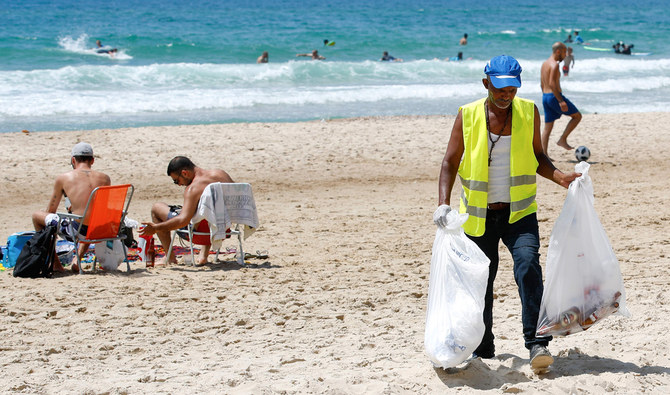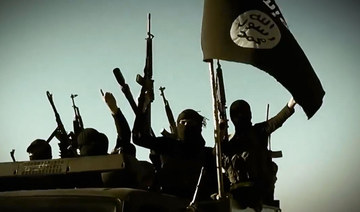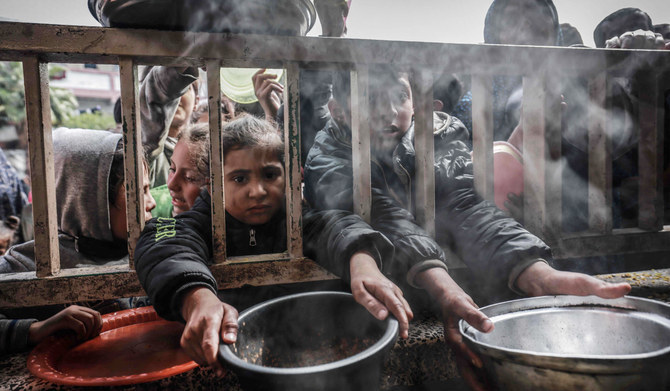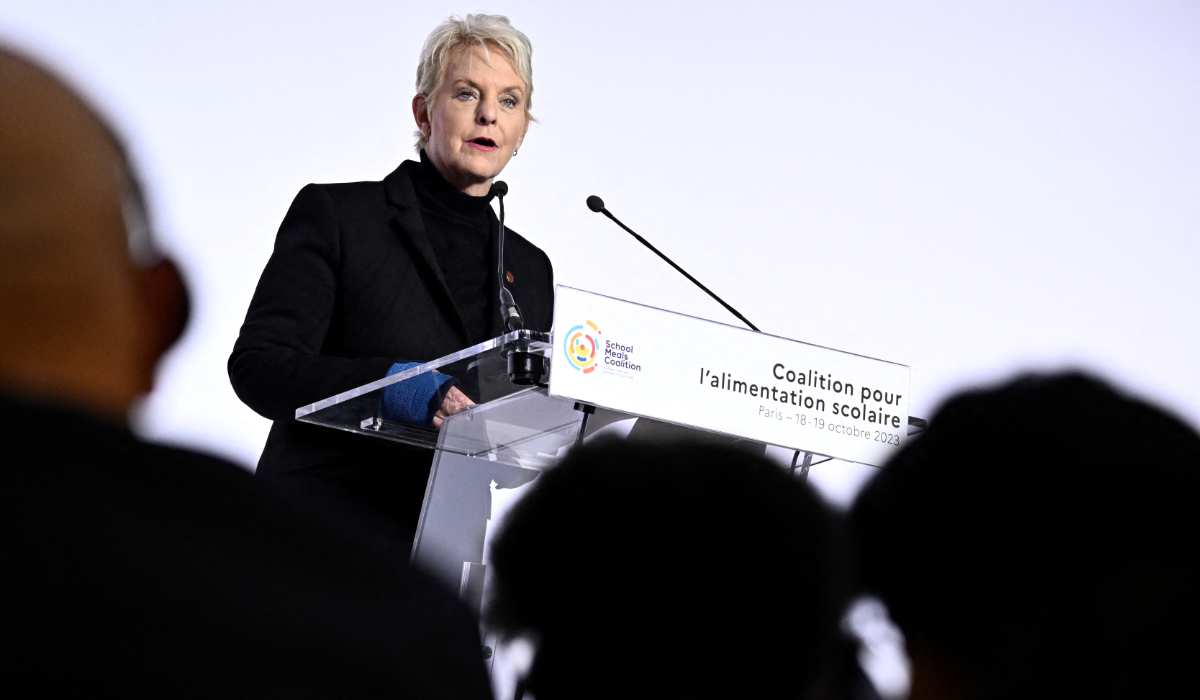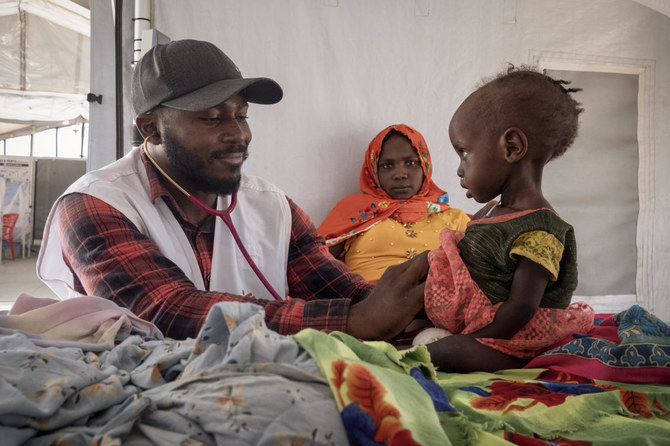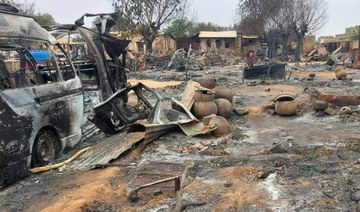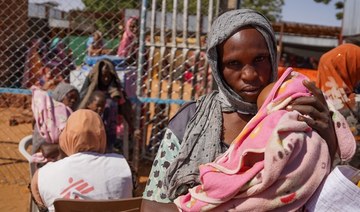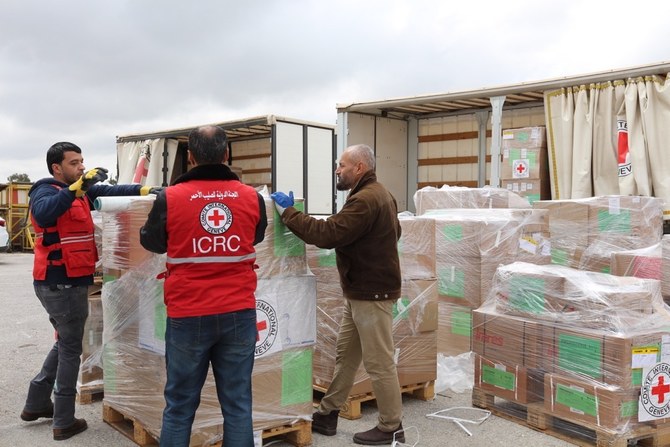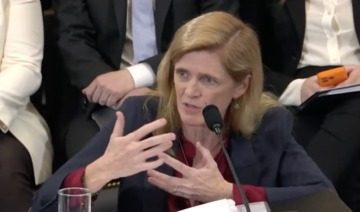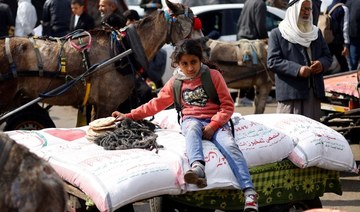TEL AVIV: In the early morning, when the only sound on Tel Aviv beach is the waves, Yosef Salman and his team pick up plastic debris left by bathers or cast up by the sea.
Working in heat and humidity with large rakes, they scoop plastic cups, cigarette ends, empty sunscreen tubes and soiled babies’ nappies.
Also present, but impossible to separate from the sand, are microplastics, tiny particles of plastic debris that have been broken down by sun and salt.
“When it rains... you can see tons of plastic in the sand,” says Ariel Shay, of the Plastic Free Israel movement, which organizes volunteer beach cleanups.
Despite the activities of environmental groups, Israel remains hooked on plastic.
A June report by the World Wide Fund for Nature (WWF) ranked Tel Aviv’s coastline as the third most polluted by plastic waste in the Mediterranean, behind Barcelona and southern Turkey.
Valencia, Alexandria, Algiers and Marseille were listed in fourth to seventh places.
With around four million inhabitants, Tel Aviv is Israel’s most populous metropolitan area.
“Every time I go to the beach now, I spend my time cleaning — it’s horrible!” complains Shani Zylbersztejn, with an eye on her nine-month-old daughter, who plays with a plastic fork freshly dug from the sand.
In the upper-crust town of Herzliya, just north of Tel Aviv, Limor Gorelik, of the environmental protection NGO Zalul, patrols the sands, offering beachgoers bamboo cups and reusable bags in a bid to wean them from single-use plastics.
Gorelik blames Israel’s passion for plastic on a lack of education and on deeply ingrained habits, such as using disposable tableware for family picnics.
Observant Jews who want a beachfront lunch on Saturdays are forbidden from washing the dishes afterwards, because their faith bans them from working on the Sabbath.
“They’re not permitted to wash dishes so they use disposable plastic,” Gorelik says.
Even plastic waste dumped in the bins that dot the beaches can end up in the sea, carried by the wind or by birds which rip open garbage bags in search of food.
Independent researcher Galia Pasternak has analyzed coastal plastic pollution in Israel.
According to her data, 60 percent of the waste on the beach comes from the bathers themselves.
Some is also borne by currents from Gaza and Egypt in the south or from Lebanon further north.
In 2005, Israel’s environmental protection ministry launched a program offering local councils incentives for proven results in cleaning their beaches.
Subject to regular inspection, councils that meet requirements get funding, while failing authorities face cuts or even court, says Ran Amir, head of the environment ministry’s marine division.
Amir cites the case of the popular Palmahim beach, south of Tel Aviv.
Palmahim municipal council was taken to court and fined over the state of the beach — which has since become “one of the cleanest beaches in Israel today,” he says.
The ministry’s strategy in recent years has also included public service messages on radio and online, along with fines, recycling facilities and education, according to Amir.
“It think it has partially worked,” says Pasternak, who helped set up some of those programs.
Zalul’s Gorelik, however, says Israel is still trailing behind other countries.
She says charges introduced in supermarkets in 2017 for plastic bags — previously given away free — are too low, at just 0.10 Israeli shekels (0.02 euros/ $0.03) each.
“It’s not enough,” Gorelik says, adding that even this modest measure does not apply to small grocery stores.
She points to new European Union restrictions on single-use plastics.
“Europeans are the leaders on the subject,” she says.
“Here, we are very far away.”



